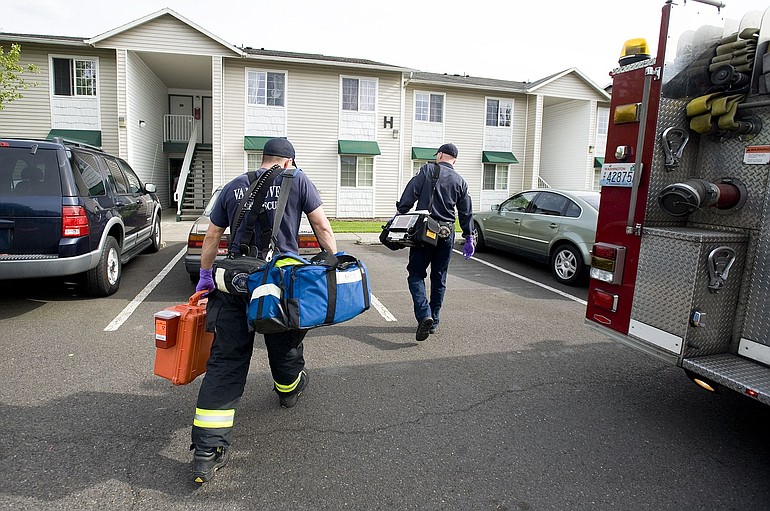It’s a bit of good news folded in with the bad: Since Vancouver closed its central-most fire station, average response times across the city have gone up 35 seconds. But that’s not as bad as the department thought it would be.
When Fire Station 6, 3216 N.E. 112th Ave., closed its doors at midnight Dec. 31 due to budget cuts, administrators thought response times in the area Station 6 had served would jump two and a half minutes as engines from surrounding stations rushed to cover the calls, Fire Chief Joe Molina said.
Instead, that average response time in that area is up 68 seconds for the first three months of the year, compared with the same time in 2010. Across the city, the department predicted an average increase of 30 seconds a call; it grew 35 seconds.
Of course, the news is just a snapshot of one quarter in one year, but Molina said he thinks there could be room for even quicker response times.
“There’s an ebb and a flow,” he explained. “As weather gets better, we have better response times. But summer’s typically busier for us. So there’s better weather, which will help. But we will also have more calls, which will hurt.”
In January, the first month surrounding stations had to cover for the loss of Fire Station 6, response times in its area slowed by more than three minutes, to more than nine minutes. However, as crews learned the fastest routes, the weather improved and a new automated dispatch system using GPS on trucks for deployment launched, things got better.
All stations are expected to cover the “donut hole” left by the station’s closure, Molina said, but stations 3 (in the Heights) and 8 (in Cascade Park) have seen the biggest increase.
Using a new mode of response time tracing, data showed that 90 percent of calls in Station 6’s area, firefighters were on scene in 8 minutes and 32 seconds or less, 35 seconds slower than the same time in 2010. Citywide, 90 percent of calls are on site in 8:02 or less.
Mary Elkin, who started Friends of Fire Station 6 to fight her neighborhood station’s closure, said she welcomed the news that things aren’t as bad as they could have been.
“I slept a lot better knowing they weren’t as bad in the first three months as they were in January,” she said, but she still called upon the city council to accept a $2.3 million federal grant to reopen the station. “It’s really imperative that they do open that station. There’s been a lot of fires lately. They’re horrible anywhere … but I can’t help but think if some of those fires were here, they may not have gotten here in time to save the neighbors’ houses.”
The city and its largest fire union, which have been headed toward state arbitration in deadlocked contract negotiations, have been attempting to reach a middle ground.
A labor agreement could help ease the minds of uneasy city councilors, who have expressed reluctance to accept the SAFER grant at a time when their labor contract remains unsettled.
Molina said that he’s got 13 firefighters lined up to hire should the city council approve the SAFER grant in its spring supplemental budget on June 20.
“We’re full bore ahead planning for the station reopening,” Molina said. “We have to be ready in case they accept the SAFER grant.”
Should the council accept the grant, the station could reopen as soon as August, he said. The grant pays salaries for two years, and requires the city to keep the same level of firefighter staff for those 24 months.
Vancouver is also part of an upcoming daylong panel this month on redesigning the way EMS District 2, which covers much of Clark County, handles medical calls.
Medical calls make up 80 percent of the department’s calls, and “how we deploy for EMS is going to change dramatically,” Molina predicted.
Among the options is sending just the private ambulance company to some low priority calls (the city already does this with its lowest level calls), and also putting more emphasis on fast response times to calls that truly warrant it.
Expecting the same response time for a bleeding leg and for a heart attack may not be the best use of resources, Molina said.
“We’re a very dynamic system, and we’re always tweaking it,” he said.
Andrea Damewood: 360-735-4542, andrea.damewood//twitter.com/col_cityhall.



